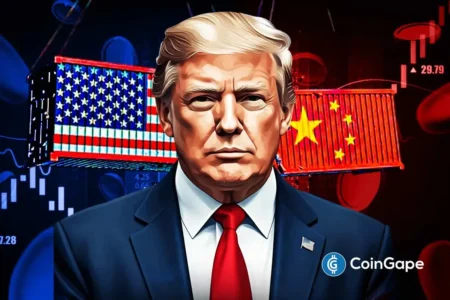U.S. CPI Inflation Data and Its Impact on Bitcoin’s Surge
The release of the U.S. Consumer Price Index (CPI) inflation data has turned heads in the financial landscape, with figures falling below market expectations. For September, the year-on-year inflation rate rose to 3%, slightly below the anticipated 3.1%. Moreover, monthly CPI came in at 0.3%, underperforming expectations of 0.4%. This unexpected dip in inflation rates has bolstered speculation around potential Federal Reserve rate cuts, significantly impacting the cryptocurrency market, particularly Bitcoin.
Understanding the Inflation Figures
The Bureau of Labor Statistics (BLS) released CPI data that reveals a steady yet lower-than-expected inflation rate, calming fears of unchecked price rises. The Core CPI, which excludes volatile food and energy prices, also matched the 3% YoY and 0.2% MoM figures, both below the predicted values. The stability in inflation figures, especially against a backdrop of a government shutdown, is promising for the economic outlook. It shows that inflation remains manageable, providing the Federal Reserve with wiggle room as they consider future monetary policy changes.
The Broader Economic Context
The timing of the CPI data release is particularly significant. With the government shutdown causing disruptions, the BLS had previously rescheduled the inflation data delivery, making this the only crucial economic indicator to be released during this period. Despite operational challenges, the inflation data signifies ongoing economic resilience, which is essential amid rising concerns about inflationary pressures. This stability is likely to encourage the Fed to examine potential rate cuts in their upcoming meetings.
Bitcoin’s Response to CPI Data
In response to this favorable economic news, Bitcoin experienced a notable surge. Shortly after the CPI data release, the cryptocurrency skyrocketed, crossing the $111,000 mark. This sharp increase reflects market participants’ growing confidence in a potentially dovish Fed stance, indicating that traders see a favorable landscape for risk assets like cryptocurrencies. Bitcoin’s rise also hints at a broader shift in investor sentiment, as decreasing interest rates tend to make alternative assets more attractive.
Influencing Factors in the Crypto Market
Earlier in the day, before the CPI data was released, the crypto market had already begun to rally. Speculation surrounding geopolitical developments, especially prior indications of former President Trump meeting with China’s President Xi Jinping, also fueled this bullish momentum. Such global diplomatic efforts are often perceived positively by markets, adding to the underlying optimism even before the inflation data was published.
Fed Rate Cuts on the Horizon
Looking ahead, traders are increasingly pricing in the possibility of another Federal Reserve rate cut at the forthcoming FOMC meeting. Analysts predict a reduction of 25 basis points, which could further enhance the appeal of cryptocurrencies as alternative investment vehicles. If the Fed takes this step, it would signal a commitment to supporting economic growth, making it easier for assets like Bitcoin to garner investor interest amidst a low-yield environment.
In conclusion, the recent CPI inflation data presents a mixed but encouraging picture for the U.S. economy, revealing stable inflation that aligns with Federal Reserve objectives. The initial response from the crypto market, particularly Bitcoin, underscores the importance of monetary policy in shaping market dynamics. As traders digest the implications of possible rate cuts, Bitcoin and other cryptocurrencies may continue to enjoy a bullish trend, drawing more investors seeking growth in an ever-evolving economic landscape.

















